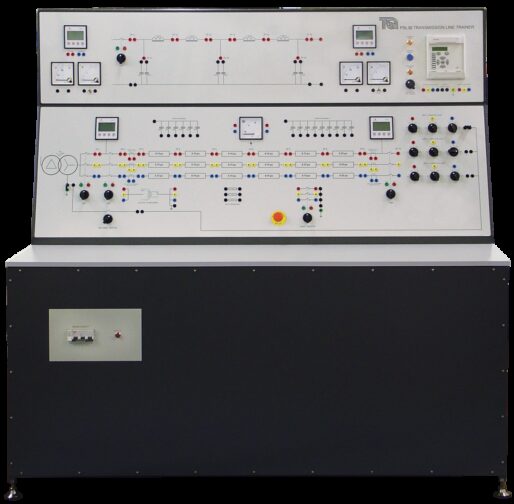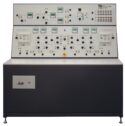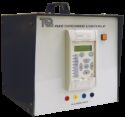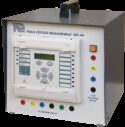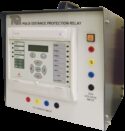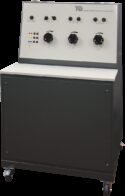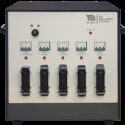Experiment
PSL30
TRANSMISSION LINE SIMULATOR
Investigates short, medium and long transmission line performance in single-phase and three-phase systems.
If you have any questions or you'd like to discuss a product, please call us.
+44 1159 722 611TRANSMISSION LINE SIMULATOR
The Transmission Line Simulator investigates single-phase and three-phase transmission lines.
The configurable simulated transmission lines allow realistic studies of short, medium and long-distance transmission lines under variable load and power factor conditions, as well as with inserted faults.
The console is divided into two control panels, each with detailed mimic diagrams. The upper panel has a single-phase transmission line equivalent circuit, and the lower panel a three-phase transmission line. The lines may be loaded by the resistive, capacitive and inductive loads included. The effects can be monitored by instruments at the send and receive ends of the transmission lines. The single-phase transmission line includes a set of inductive impedances connected in series. Tapping points allow the user to:
- change the length of the simulated line;
- set up ‘Pi’ or ‘Tee’ methods of loss profiling using different values of capacitance; and
- monitor the voltage, current and power at any point along the line.
The three-phase transmission line is in six sections represented in ‘per-unit’ values. Facilities include:
- Operating under variable balanced or unbalanced RLC (resistive, inductive and capacitive) loads
- Selectable neutral
- Provision to vary the length parameters
A fault application switch and earth fault resistors allow studies of earth fault currents and the operation of relays of varying sensitivity.
For protection tests, current transformers (CTs) in the test circuits connect to the protection relay fitted to the control panel.
The user connects and sets the protection relay to detect line and earth currents. The relay also monitors and measures fault events and disturbances for fault analysis. The user sets the relay from its local control panel or by a cable link to a suitable computer and software (included). When a circuit fault happens, the relay opens circuit-breakers in the test circuits. The circuit-breakers also include hand-operated switches, and lamps. The lamps show whether the circuit-breakers are open or closed.
Supplied with the equipment is a set of shrouded leads for the user to connect the test circuits together. The unit includes an emergency switch, a mains supply isolator and protection fuses.
Supplied with a comprehensive user guide which includes equipment descriptions, theory and experiments. Also, the open and flexible structure of the equipment makes it ideal for student projects and for lecturers to create their own experiments.
Learning outcomes
Single-phase line:
- Short-line investigation
- Medium or long-line investigation (nominal ‘Tee’ and ‘Pi’ methods)
- Effect of power and reactive power flow on voltage drop and transmission angle
- Medium/long-line investigation of a natural load of a line
- Voltage regulation at constant load and power factor - Three-phase lines:
- Per-unit values
- Unbalanced loads and the neutral connection
- Fault simulation and line protection studies
- Parallel feeders and multi-section lines
Three-phase line:
- Per-unit values
- Unbalanced loads and the neutral connection
- Fault simulation and line protection studies
- Parallel feeders and multi-section lines

